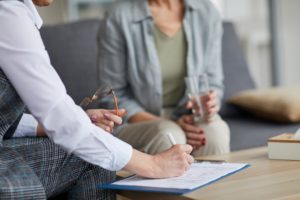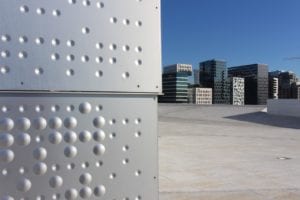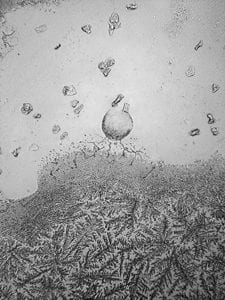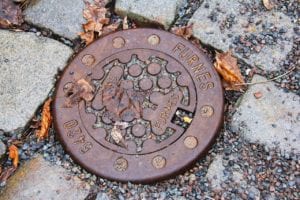
"I want to get rid of anxiety" - How to understand anxiety and reduce anxiety.
Author: Øystein Nødtvedt
At first you weren't sure what to call it. It was something vague and incomprehensible, but eventually you became aware that the unpleasant thoughts and sensations you were walking around with were anxiety. You think - "how to get rid of anxiety?" but don't quite know how.
It is difficult to escape from oneself when the discomfort comes from within.
Fortunately, we know a great deal about anxiety and how to get rid of anxiety. There are several things you can do so that you don't have to live a life characterized by control, uncertainty and discomfort. It opens up the possibility of living with a freedom to express yourself in the world as you wish without the limitations of anxiety.
This article will provide some answers on how we can get rid of anxiety that inhibits and steals our quality of life. And how we can live a life where anxiety takes less control of our lives.
What is anxiety?
Anxiety is by its very nature something we want to avoid – it's unpleasant. Sometimes it is one of the most unpleasant things we go through as humans. The experience of losing control over oneself, one's own body and inner life can be overwhelming.
Just like pain, anxiety is a signal that can help us navigate the world as safely as possible. Unfortunately, due to previous threatening experiences and unsafe relationships, this signal can later be turned on disproportionately intensely and frequently. The body reacts to internal threats from the past where the danger is now over. We can call it memories of the future where the anxiety acts as a false or oversensitive alarm.
This article will discuss some ways in which you can try to regulate and reduce your anxiety yourself - change the alarm so that it becomes more useful than an obstacle.
If you have not already done so, it may first be useful to familiarize yourself with what we mean by anxiety - a physiological discharge in the body - something that this article goes into more depth.
What helps in the face of anxiety?
An important prerequisite for regulating anxiety is our ability to pay attention to it. Anxiety can often be experienced as a vague but strong discomfort from which we instinctively want to remove ourselves. Thus, we become less aware of how the anxiety is actually physically present.
We can escape from anxiety in different ways. It can be through external distractions, food, drugs and other stimuli. We can also escape from anxiety by avoiding attention to our own body where the anxiety symptoms are expressed. A signal that tells you this is if you constantly find yourself in a whirlwind of thoughts, thoughts of worry. Or if you try to change external circumstances with your thoughts.
Paying attention to the anxiety
Like the light beam from a flashlight, we have to a greater or lesser extent the ability to control where our attention should be directed. If we think of anxiety as a bodily signal that wants to give us important information, it may be wise to be a recipient of the signal so that the body becomes "satisfied". When we are open recipients of information, the anxiety inside will not turn up the intensity.
If we are not open and accept the anxiety, the anxiety is maintained or worsened. A basic principle i anxiety treatment is therefore that part of what maintains anxiety is our habitual and more or less conscious avoidance of it - whether it is a feared external object (such as in the case of spider phobia) or sensations from the inside.
Many people have a natural aversion to directing attention from the external environment or thoughts down into the body. Common thoughts are about the anxiety getting worse if you give it attention. There may also be thoughts that you will lose control if you do not avoid it. These are understandable thoughts, but unfortunately assumptions that can prevent you from investigating even if this is actually true.
As the anxiety is a signal that there is a danger that must be avoided, it may seem counterintuitive to focus attention directly on it. It's like being told to run straight towards an attacking bear rather than running away from it.
Directing the attention inwards on the feelings of anxiety is necessary for the body and oneself to discover that the threat was not as dangerous as thought. By not resisting feeling the sensations, one will be able to discover that the bear turned out to be a wild cat.
Why is it difficult to direct attention to anxiety?
Why does it happen that we avoid directing our attention to what we sense on the inside?
This is often about the fact that, through insecure relationships and a lack of positive emotional contact growing up, one has learned a hidden assumption that one's inner, bodily life - i.e. one's needs and feelings - is not important or valuable enough to be given attention.
Giving yourself that patience and curiosity about yourself can seem threatening to some - like breaking a law.
These hidden assumptions lie in our unconscious and affect how we experience ourselves and the world. Examples could be: "I ignore my inner life because my inner life was ignored by others"; or "I treat my inner life as unimportant and unimportant because my needs and feelings were treated as unimportant and unimportant."
When such assumptions are the basis, a change will require courage. A courage that involves listening to and turning on the part of oneself that wants to do something good for itself. By giving room and space to it, we can "get rid of" unnecessary anxiety that is linked to erroneous assumptions. Anxiety is mitigated by giving it space by letting it into our attention.
How would a warm and attentive parent relate to a child who was afraid? Would the parent ignore what the child felt inside or would the parent pay attention to it? Can you yourself try to give yourself this kind of attention?
What you can do yourself to get rid of anxiety
There are various ways we can work on ourselves to regulate ourselves when anxiety arises. This is something we can learn and practice. You can do this through attentive presence and exploring triggers for the anxiety. It is also necessary to learn to get help from other people in regulation. Without others, we become lonely and anxious.
What happens in the body? - attentive presence in the face of anxiety symptoms
So how can one practice regulating anxiety? The attitude can be similar to attentive presence in the sense that you practice directing your attention inwards towards the pure and concrete physical sensations you can feel in your body.
I have anxiety now, but how? How embarrassingly accurate can I be in observing from the inside how the anxiety feels in the body? Where on my body do I feel anxiety? In the stomach, shoulders, chest? Where exactly in the stomach, shoulders, chest? How does it feel? What quality will I find there? Is it tingling? Tense? Nausea? Heart palpitations? Sweaty hands? Am I dizzy? Is the field of vision different than a few minutes ago? Do I hear hissing? Do the sensations move or are they static? Does the intensity increase or decrease? Is it cold or hot? Or is it like an electrical voltage? Perhaps pulsating?
Feel your breath as you do this. You will like to notice that you try to automatically interpret the sensations and give meaning to them with your thoughts. This is perfectly fine, but by being able to keep your attention on the bodily anxiety, you will notice that you become somewhat more used to them.
A principle when it comes to regulating anxiety is to allow it to be there – not try to actively suppress, control, or avoid it. At this moment, the sensation is already present - allow yourself to observe it fully with a neutral, patient, warm and curious gaze.
What happened when the anxiety arose? – Exploration of triggers
Something else that can be useful when regulating anxiety is to examine which situations may have triggered emotions in me that may have triggered the anxiety. We are not always as aware of what emotions are being awakened in us as they are camouflaged by feelings of anxiety instead. Thus, anxiety can occur without it being clear why.
Then you can try to take a step back and examine: when did I notice for the first time today that I was anxious? Maybe I find that before lunch I didn't have much anxiety, after lunch I suddenly have anxiety.
What situations might have been demanding or unpleasant? Was it a colleague who gave me an unpleasant look? Did I imply a critical remark directed at myself? Or was there rather a good atmosphere at lunch today? Was there something about positive feelings that triggered some discomfort in me?
If you see a clear situation that triggered the anxiety, you can further ask yourself: what feelings could have arisen inside me in that situation that I did not feel quite clearly? What underlying emotions can the anxiety act as a protection against acknowledging? Is there an underlying sadness? Any underlying anger towards the critical colleague? Or did positive feelings arise in me that my body became anxious about?
Does this type of situation remind me of previous bad experiences I've had? Through this inner exploration, one can begin to see possible connections that can help one get in touch with the inner drivers of the anxiety - making unconscious feelings more conscious. Can I feel some sadness under the tension if I look long enough? Can I allow myself to release it and come up inside me?
To reduce anxiety with the help of others
One of the most effective ways to regulate anxiety is to get contact, closeness, understanding, emotional attunement and support from others. We are fundamentally social beings from the first breath and are wired to seek contact with other people.
Being alone is anxiety provoking. Imagine a scared and screaming baby being picked up in the arms of its mother and stroked, rocked and soothed to sleep with a soft voice. From the very beginning, contact in the form of eye contact and touch is regulating for the nervous system.
Unfortunately, many people have experienced growing up that close people who were the source of security have also been the source of danger and fear. This makes seeking regulation from others more complicated.
On the other hand, there may be certain people in life with whom you have been safe. For some, it has been a pet, a dog or cat, that has served as a faithful and non-judgmental regulatory other. Making contact with someone you feel safe with and can share what's happening on the inside with - preferably seeking out someone you can touch and hug - is fundamentally anxiety-reducing.
What do I do when I have a lot of anxiety and I'm alone?
When we are overwhelmed by anxiety, it can also be good to know how to lower the physiological activation in the body on your own, for example if you are alone. If the nervous system is in high gear, there are certain techniques you can try to dampen the activation.
The most central remote control is the breath. In case of high anxiety, you can try to consciously breathe deeply and calmly into your stomach, preferably with your nose. There are various techniques for this, but one suggestion is to count 5 seconds of inhalation and 5 seconds of exhalation for a few minutes. Feel free to put a hand on your stomach and feel it expand and sink.
You can also try to release activation by moving your body - dancing, shaking your arms and legs, running up a flight of stairs.
As anxiety is often about the past or the future, it can also help to establish yourself in the present. Direct your attention to and be in contact with your immediate inner and outer surroundings. Especially if you feel very overwhelmed and on the verge of panic, this can be useful.
This can be done by, for example, curling your toes, stroking your arms and thighs, or turning on your senses. How many red things can you find in the room you are in? What smells and sounds are there now? In this way, you can establish yourself in the present rather than the past and future.
When anxiety makes us disconnected from ourselves. What do I do then?
At other times, the anxiety is expressed in the form of too low activation - hypoactivation, rather than increased activation (hyperactivation). This causes symptoms such as weakness, heaviness, dizziness, nausea, altered hearing and/or blurred vision. A technique to regulate this that can be tried is to tense all the muscles in the upper body as hard as you can for 3 seconds on inhalation, and then let go, in order to increase activation and revive parts of the body that have been turned off.
One possibility: Working with anxiety in therapy
Hopefully, this article has given you some pointers on how to get rid of the anxiety that is taking up unnecessary space in your life. And then start taking an active attitude towards your own anxiety to give yourself a little more peace.
There are many approaches to alleviating anxiety and finding its source. To get to the bottom of the emotional drivers of the anxiety, exploring this with a therapist can be useful. In psychotherapy, together you can examine the ways in which anxiety is expressed for you and explore in which situations anxiety is more and less present. Furthermore, based on this, one can explore which emotions in which situations act as the engine for the anxiety and tackle it at the root.
There is help to free oneself from a body that has been stuck in the past so that one can live here and now with an experience of equilibrium and balance.
If you want to learn more about anxiety you can also check out these websites:
- Read more about the treatment of anxiety at The Association of Psychologists.
- Explore different therapies that can help Healthcare.







